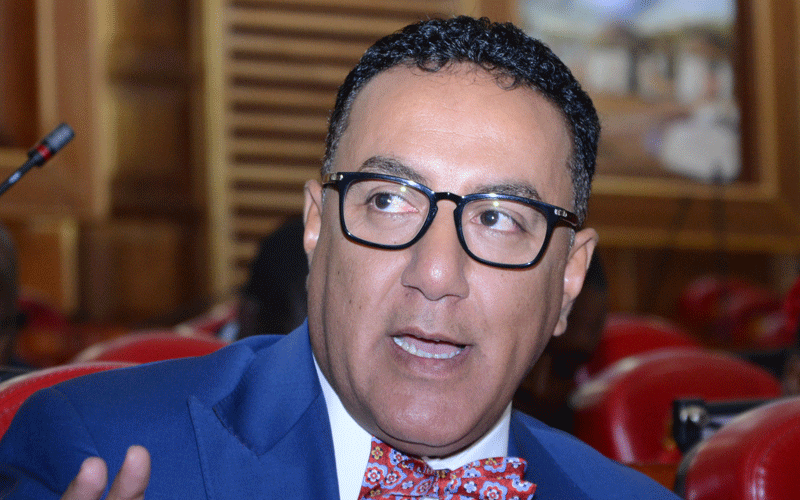Ten sectors to quickly spur Kenya’s growth ‘post-lockdown’

Covid-19 has led the Organization for Economic Cooperation and Development to project global economic growth at 2.4 per cent, from an estimated 2.9 per cent in 2019. During that period, Kenya’s growth is predicted to range between 1 and 3 per cent. Already, foreign investors at Kenya’s stock market are selling stocks as the virus spreads, it is hoped that with easing movement restrictions, the economy will leverage these key sectors to normalcy:
1. Transport Sector
With inter-county borders now open and effectively ready for travellers, economists estimate that almost Sh500 million was lost during the four-month, when travel ceased.
Over 100 companies shut offices and hundreds of workers were declared redundant. But the transport sector is now reinventing itself as road and train transport rolls back to its feet.
This is expected to have a positive knock on effect on various other sectors.
2. Tourism and hospitality sector
The State pumped in Sh5 billion into this crucial sector in a mark of faith to the players in the sensitive industry.
Having already incurred losses in the millions with hundreds of employees being axed in different hospitality areas, the situation will ease a bit, as adjustments in pricing to encourage local tourists to visit parks across the country.
Compliance with Ministry of Health requirements will however be key. Cabinet Secretary Najib Balala plans to use the Government stimulus package on marketing Kenya once the spread of the virus is contained globally.
3. Aviation sector
The impact of the pandemic on the Kenyan air travel industry was dire with airlines having projected a steep climb back to normalcy after months of disruption.
Jomo Kenyatta International Airport lost up to 80 per cent of traffic at the facility between March and May.
With local flights having opened followed by internationally flights in the first week of next month, business entities that bank on freight will feel the relief very soon.
4. Jua Kali sector
One of the most affected sectors by the coronavirus crisis has to be the informal sector which employs close to 80 per cent of Kenya’s employment.
The sector makes up a significant portion of demand of low-end Fast-moving consumer goods (FMCG) and it is likely that with reduced incomes this demand will crash.
But with the small excitement in the market, it is expected people will go back to their hustle as demand soars on eased movement.
5. Import and Export
Trade flows due to transport and logistics disruptions has seen a dip in imports from Kenya’s main source of merchandise.
Currently, China which occupies 60 per cent of world supply and demand is the leading exporter to Kenya.
Challenges at border will soon be sorted to ensure smooth but cautious trade amongst trade partners as protocols on clearance of cargo at sea ports and airports get entrenched, more cargo will come in, boosting trade volumes and business.
6. Manufacturing Sector
Essential goods manufacturers recorded rises in revenues over the month of March as local products filled the gap left by closed borders.
The largest manufacturer of pharmaceuticals in the country had its highest ever revenue in March as the Government, households and businesses in the value chain are buying both in caution and reaction.
Food and beverage manufacturers are also estimated to continue having strong revenues until household consumption begins to fade with stretched out incomes.
However, with Government injection of over Sh1 billion in the sector, it is expected that there will be improved growth.
7. Construction and Property Sector
Government and health directives including social distancing directives, travel restrictions, curfews and county lockdowns affected the sector a lot.
While delays in completion of projects still continue amid global supply chain distortions, delays in receipt of funds which had stalled could change quickly amid reduced restrictions to give the sector breathing space.
8. Agricultural Sector
The triple effect of locust invasion, corona virus and supply chain challenges hit the sector hard.
Coffee and tea exports are on the decline as well due to weak demand and low commodity prices in target markets.
There is now an opportunity to get back on gear with strong Government interventions to support the sector even post COVID-19.
Analysts suggest that Agricultural output domestically is a key variable and if well managed will help the farming community.
9. Sports and Recreation
The Sports industry suffered heavily as playgrounds were shut and even those that continued there was absolute no visibility affecting sponsorship.
The few corporate sponsors bolted or stifled their commitment monies because it was felt there was nothing to show for it.
The Sports Ministry has however set up an Ad Hoc Advisory Committee to advise on return to action so that the hundreds of youth dependent on the sector get reprieve.
The Sh15 billion for sports, culture and heritage is expected to provide cover for the sportsmen apart from preparations for forthcoming international events.
10. ICT Sector
Kenya’s tech sector has grown to become one of the most promising in the economy.
With budding entrepreneurship from the sector, despite a new tax element for the sector, venture capital funds will come in for good ideas that providing solutions to the Kenyans and the world.
They have done so in many locally owned startups and more Kenyans are expected to seek collaborations to grow the nascent tech ecosystem and provide solutions.















